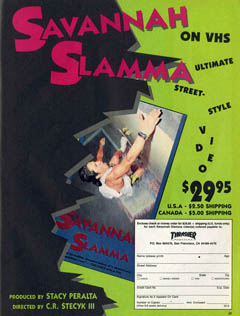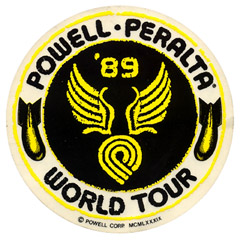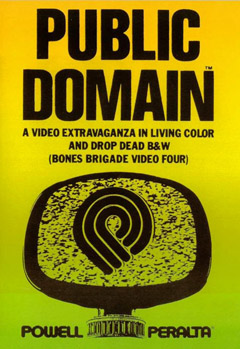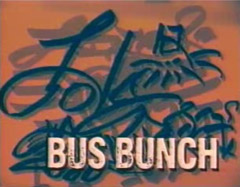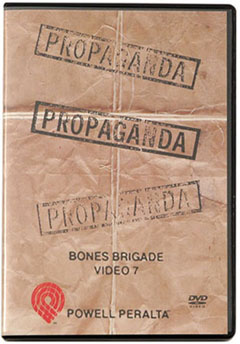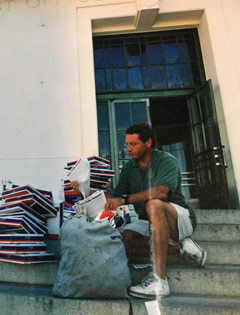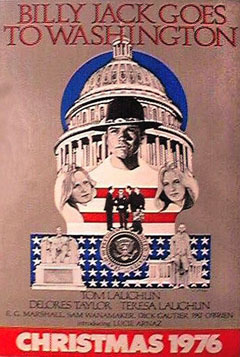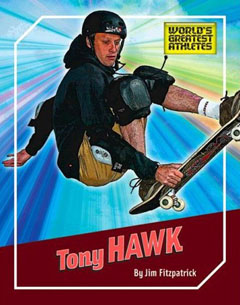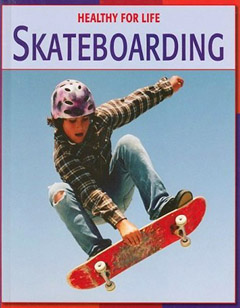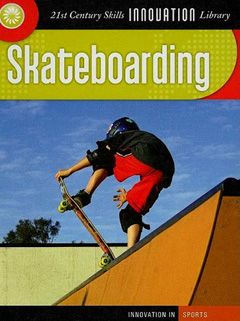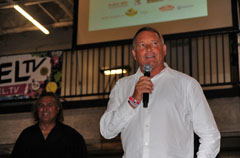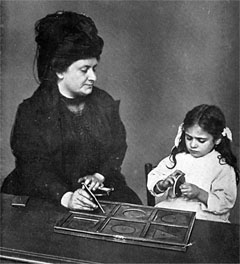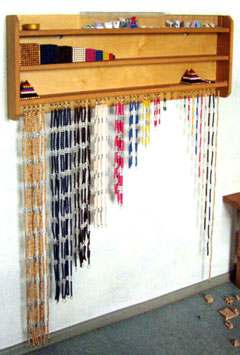| |
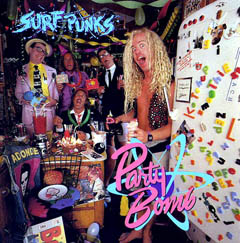 |
|
Jim Fitzpatrick :
exclusive interview 2011
CONTINUED FROM PART
2
Powell-Peralta
How did you become acquainted with George Powell?
There was an advertisement in the newspaper for a ‘creative writer to work on video productions for a recreational products company.’ I was surfing at Rincon with my friend, Craig Angell, who said, ‘Hey, I saw an ad in the paper you should respond to.”
When I looked at the ad I recognized the company as Powell Peralta because a few weeks before I had arranged to take one of my students to the factory to show him how a skateboard was manufactured. So, I called the number, they asked me to send them a resume (CV) but I didn’t have one, so I sent a letter that basically said I had started skateboarding on steel-wheeled boards in the 1950s, had worked on ‘music videos’ when I was younger, and could write my way into and out of any situation.
George’s assistant, BJ Danetra, called me and asked that I come for an interview. I did. I sat outside George’s office for two hours, “Uh, I have to go...” BJ arranged times for me twice more and I never met George. “Then she called asking, ‘What are you doing for the next couple of days/?’ ‘Well, I’m teaching school.’ ‘Could you travel to Savannah, Georgia to work with Stacy Peralta on a video production he’s doing?’ ‘I don’t know, I’ll have to call you back.’
The next day a driver delivered me from Santa Barbara to LAX, and as I climbed out of the car I couldn’t help but notice a very ‘attractive’ woman stepping from a limo. She seemed very distressed about something, and I asked, ‘Need some help?’ This was Robin Henderson, and she was a mud-wrestler at the Tropicana nightclub in Hollywood. I had just finished writing a feature magazine story about Santa Barbara’s body parts industry, and it turns out Robin was on her third set of breast implants.
We ended up sitting together on the airplane ride to Atlanta, GA. She was on her way to a Hustler Magazine shoot and I was her font of information about body parts for the entire flight. As we exited the plane I heard a voice say, “Oh, look, it’s Fitzpatrick! She’s with Fitzpatrick, how perfect is that?!? I should have known!” The voice belonged to Dennis Dragon (“Surf Punks”) who i had gone to junior high school with and hadn’t seen in 20 years. Dennis worked for Stacy on many Bones Brigade video productions as a video cameraman, and would occasionally also contribute music and post production work, too.
I introduced Dennis to Robin and we began walking to our connecting flight...Dennis introduced me to Peralta, to Craig Stecyk, and to Lance Mountain as they came off the flight—we’d all been sitting in different sections of the plane.
Thus began my stint with Powell Peralta as a writer and production assistant for what came to be known as “The Savannah Slamma,” produced by Thrasher Magazine.
What is your exact role when you get into the company?
I was the writer. Originally I was supposed to be in charge of writing scripts for the Bones Brigade videos. My business card read: “Writing Unit.” I was the Writing Unit for about a year. I didn’t really have much responsibility, but I had a desk in the design department where I worked alongside “VCJ” (Cortland Johnson), and Nick DiNapoli.
Stacy Peralta and Craig Stecyk lived in Los Angeles, and usually once a week they would arrive, sometimes with Lance Mountain along, and sometimes to coordinate with rendezvous including Caballero or Tony Hawk. Cort kept at his work of deck design, awaiting approval from the skaters, and Nick worked on other design projects including industrial projects (moulds for wheels and deck production) but also trade show booths, and his assistant was responsible for maintaining the artwork deadlines for the magazines.
Into this world I stepped as a school teacher where I discovered, amongst other things, that no one could spell words correctly, and general communication was greatly challenging because all of the “artists” were artistic, and all of the business folks working on sales were not artistic and wanted only clear answers; “When was the new Hawk design going to be finished?” “When Tony approves it.” “When will that be?” “When he sees it,” etc.
One of my first projects was writing the script for the Savannah Slamma video production, which was actually really funny, in that there is no real script, other than the narration at the beginning of video. It ended up being about “half” of something as we had videotaped a variety of things that ended up being half of a whole.
The whole Savannah Slamma experience was an event in and of itself. Steve Rocco was one of the skaters entered in the contest. Christian Hosoi. Jesse Martinez. Mark Gonazlez. So, not only was the Bones Brigade team in full force, but most of the professional skateboarding world was there, too, and there was nothing there! The contest was scheduled for qualifying on Saturday afternoon and finals on Sunday, and when we pulled up at Martin King, Jr. Memorial Stadium on Wednesday afternoon there was nothing inside the arena. Not a thing, and I thought, ‘What the hell?”
Thursday morning a lumber yard truck arrived shortly after we arrived after having breakfast at the hotel with Tim Payne. Tim had drawings on paper napkin, as did Lance Mountain.
There I was, in Savannah, Georgia, a school teacher, who because of budget restraints built his own tables for his school, and for whom a single piece of hardwood plywood is a major investment, and the lumber yard truck arrives with an entire pallet of ½ inch plywood; ¼ plywood, masonite, cases of screws and nails, and an array of screw guns and other tools. The crew included Tim Payne and his guys, Lance, James Muir, Stecyk, myself, and a few others, and by Thursday afternoon there were actually a few quarter pipes, and launch ramps and a few other basic elements that had been roughed together. That’s when skaters began to arrive. It was the first time I was to see modern skateboarding, and I couldn’t believe it.
Lance had designed two 6’ high four-foot wide quarter pipes that I helped screw together, and before putting on any masonite he shoved them up against a wall at the far end of the arena. Christian Hosoi had arrived and was rolling around when he spotted the ramps against the wall. Suddenly he started pushing in their direction, and I thought, “OK, this will be interesting…I thought he’d roll up one and back down again, done.”
Not so. The ramps were about six feet apart from each other and Christian, traveling as fast as he could push himself, rolled up the first ramp, started carving a turn, and rode across the wall and down the other ramp! It took my breath away. I gaped. I couldn’t believe what I’d seen. He’d ridden the wall. I jerked my head around to share with everyone else’s amazement, and no one, not one single person seemed to have even noticed what Christian had done. Stecyk knew though, and said, “You’ve got some catching up to do.”
So, I caught up. Wide eyed my early days included the video projects and I took over writing and editing the “Bones Brigade Intelligence Report“, which would become a monthly zine sent out to about 35,000 kids around the USA, sometimes finding its way to Europe, too.
Are you present at the first video-Powell Peralta in 1984?
Nope. At that time I was a dad, and a school teacher. Surfing as much as I could, and occasionally riding my daughter’s skateboard up and down the street.
You were with Craig Stecyk, during your tenure at Powell. How did he get involved in the Powel videos? Did he have the fame that he has now?
Craig Stecyk was part of the Dogtown crew experience that included Jay Adams, Skipper Boy, Glen Friedman, Tony Alva...Craig was an essential ingredient in the art and culture of what became known as Dogtown. We later put together connections that he and I shared before we got to know each other at Powell Peralta.
The Zephyr Surfshop was home to Jeff Ho and Skipper Engblom, and it was the Dogtown team’s headquarters. 2001 Main Street in Santa Monica. Unimposing then, and much the same today, the building was more or less a capital letter U surrounding a parking area. There were ‘studios’ in the back, and Gary Weiss lived in one of the studio areas during the late 60s and into the late 70s.
Gary was an artist, photographer, volleyball player, surfer, not a skateboarder, and had great hair! He was a great friend of Frances and I, and he spent a great deal of time with us at our house at Topanga Beach. We also visited his studio, and since there was only one toilet for the entire building there were a number of interactions with Skipper and myself and Steyck, too. “Hey.” “Hey.” “How you doing?” “All right.” That was about it for the 70s and Stecyk and I, but there we were spending days and weeks together during our time at Powell Peralta.
What was his role? An art director?
Ideas. Art director, certainly, but ideas may have been his greatest contribution. Great great concepts, and funnier than shit, too.
What do you think of his writings about skateboarding through his articles on Dogtown in the late 70s? The Dogtown chronicles?
Stacy used to say while we working, actually he’d yell out, “GENIUS!” He felt Craig’s genius-nous throughout much of their time together.
Stecyk is a fine artist, a conceptual artist, and equipped with a photographic memory and a fine sense of design and appreciation for all things creative he makes the world a better place by being part of it.
I think Craig was able to create chronicles, rather than reports or stories. He is capable of capturing events and the thinking of those before, during and after the events in specific ways that others are capable of. He and I have had a great friendship for the past 20+ years; it’s as if we began a conversation in Savannah during that experience, and wherever we go, whenever we see each other that conversation is continuing because everything we’re doing seems to relate to the bigger picture of what we’re all doing.
When you come on tour with the Bones Brigade in Europe, what changes hit you the most since your first tour in 64?
The popularity of skateboarding. Sure, the people responding to us and the people greeting us and awaiting our arrival at exhibitions were there for “us,” but the numbers of people! 25 years before I was the only skateboarder...in 88 and 89 there were thousands of skateboarders wherever we traveled. Thousands!
With you did you tour from the Bones Brigade?
USA. Euorpe. Contests. Hawaii. There were lots of events. Tony. Cab. McGill. Guerrero. Rodney Mullen. Ray Underhill. Lance Mountain. Mike Vallely. Chet Thomas. Bucky Lasek. Frankie Hill. Jim Thiebaud. Sean Mortimer. Ray Barbee. Steve Saiz. Guy Mariano. Rudy Johnson. Gabriel Rodriquez. Paolo Diaz. There were lots of skaters I was involved with. Some more than others, but there were so many. Chris Senn. Danny Way. Salman Agah.
Who was the most insane skater of the Bones Brigade?
Frankie Hill may have been the most willing to attempt the gnarliest trick at least once. And if he came close to making it, he then became a bulldog. He paid the price, but he was filled with wonder...he loved the challenge, and fought really hard to succeed. There were combinations of skaters together...Mike Vallely and Frankie. They could have killed each other trying new tricks.
Lance Mountain and Ray Barbee. In the middle of the night in Pennsylvania. Lance asking Ray to show him to do Ray’s versions of the shove-it when he steps off the board, and his other tricks.
Lance may be the most dedicated skater I’ve ever seen. He is really amazing. He pulled the gnarliest 540, ever, in Las Vegas during the Hard Rock Contest in 93. He’d slammed during his two qualifying runs. It was 125 degrees, and he’d come out to the desert and he doesn’t gamble and he doesn’t drink and he’s at this contest and he has nothing to do, and in a moment of total frustration and disgust with himself, during a break between qualifying heats he dropped in at the very extreme edge of the 40 feet wide vert ramp and launches into his twist, and I thought he was going to miss the ramp when he came down. He was way outside the ramps boundary, but as he began to come out of the twist he must have seen where he was, and manage to get his feet toward the ramp. His whole body was tweaked toward the crowd, few who were paying any attention, as his board clapped down. He pulled it. He was everywhere attempting to get his center centered, and he did it. Rolled out back up to the roll off. Stepped off his board, tossed it to someone down below in the audience, climbed off the ramp and left Las Vegas.
With who did you have most fun on tour?
Sean Mortimer and Tony Hawk, with Ray Underhill part of the picture, too, provided a heady hysterically funny experience. Tony is a very intelligent guy, and Sean and Ray were able to provide biting perspectives and funny funny anectdotal references that just made for memorably silly experiences.
Jim Thiebaud, another genuinely intelligent and wonderfully caring funny funny guy. A great blend with Tommy Guerrero who as a stylist was unsurpassed and with his biting wit about anything...on that Euro trip when we stopped by the Marseille skatepark I noticed a sign pointing in the direction of the aquarium which I suggested we go visit. “Aquarium?” asked Tommy, “Fish? I hate fish. I hate everything about fish. I hate to eat them and I sure as fuck don’t want to spend any of my time looking at ‘em!”
Bucky Lasek Funny. Keep in mind, I was older than these guys. They were coming on, and I was there as a ‘control,’ but I enjoyed the role of being out of control, too. We had a good good time. Rodney Mullen and I would spend hours discussing sciences and human relationships. We often roomed together on the road because everyone else would be trying to score chicks or drink or party, and Rodney was more a head trip.
Was there a total asshole in the team?
Not really. Demanding? Weird? Out of step? Not really. There was a pecking order, and everyone seemed to recognize their place. It was the pecking order that was the end of the team really, because who was going to replace Tony?
Also, I was filled, still am, with such admiration for what everyone has accomplished. There were lots of really good people involved, sure they were great skateboarders, but they’re great people. Ray Underhill is a great example. He was never going to be a champion and never a Number One skater, but he was a number one guy, a number one friend, number one husband and dad...a great person who was a really good skateboarder.
Did you see (during the Powell Tour) that European skateboarding was different from the US?
Weather and terrain has so much to do with skateboarding and attitudes. In southern California there is a 365 day a year season for skateboarding. In Europe there are 150 days each year when the weather says, “No, no.” There’s such an intensity to skateboarders who don’t have the same access, the same climate. It’s like, “I HAVE TO DO THIS RIGHT NOW!”
Hazardous Recreational Activity
How and why did you found the IASC (International Association of Skateboard Companies)?
I served for three years on the Surf Industry’s Manufacturing Association’s (SIMA) board of directors. It was fun, and I was involved with people I knew and who I had done business with. Craig Stecyk and I had begun designing trade show booths and we had a few clients so we were doing projects beyond just skateboarding.
While serving on the SIMA board I noticed how much control they had of the trade show production company (Action Sports Retailer) and the subsequent benefits were not being taken advantage of by the skateboard companies.
I thought if surfing can do this so can skateboarding. So, I faxed out a proposal to every company in the industry. I called people. I met with them. It was 1993 and many of the companies were brand new, new brands, and they were all challenged as businesses. The whole industry was in a slump. Acme. Birdhouse. Think. The Firm. Many of the companies were Powell Peralta alums, and I knew them well, but no one was interested in what IASC might be able to do for them. They just wanted someone or some shop to buy their products!
Skateboarding is not an organized sport. How did you managed to organize that?
It was very very difficult, and a slow process, and when changing the liability law became a focus for me, that helped me provide the entire industry information that actually helped them.
Bob Denike at Santa Cruz said, “If I can give someone IASC’s number when they call us and ask, ‘How can I get a skatepark built in my town?’ then that’s worth something to me!” and Santa Cruz joined. Paul Schmitt was a huge supporter with his brands; Larry Balma at Transworld was a big early supporter.
I was working my ass off, sending out information, faxing, calling, mailing everyone what I was doing. I’d organize meetings for the trade shows, I negotiated new arrangements with the trade show company, and then I’d see people and they’d ask, “Hey, Fitz, what’s up? What are you doing now?” I’d be thinking, “Oh, I’m only trying to save skateboarding for the future.”
Do you think skateboard is getting more organized because it is going mainstream or is it going mainstream because it is more organized?
It’s still not organized. It is, but it isn’t either, and that’s what makes it such a great sport business thing to be involved with. I didn’t go to NBC and say, “Hey! We want to be in the Olympics!” NBC called me! Then they called again and again.
Do I think the Olympics are important for skateboarding?
Not as much as NBC thinks skateboarding is important for the Olympics. Skateboarding doesn’t need the Olympics to grow and develop, but the Olympics are convinced they need skateboarding!
Is skateboarding losing some identity because it is going mainstream and organized?
It just has more identities now. Look at how many longboards there are, now. How many types of youth models there are, now. The product line used to be very very limited, and in the past 10 years it’s exploded! Look at how many types of bearings there are, now.
In the late 1990s, to head the IASC you lead a long process to recognize skateboarding as a "hazardous Recreational activity". What were the methods you have used to achieve this?
The pen is mightier than the sword. 75,000 letters and postcards and petitions. It was the letter writing campaign that accomplished the impossble.
Frank Capra made great movies, including “Mr. Smith Goes to Washington”, in which the hero uses letters from a boys home to convince legislators to change things. The movie’s rights were bought by Tom Laughlin, who I wored for as a Montessori teacher before we started our school in Santa Barbara. Tom had developed a Montessori school in Santa Monica in the 1960s, and he wanted Frances and I to start up a new school in the 1970s, while he was working on the remake of Mister Smith; “Billy Jack Goes to Washington”.
Tom was an independent film star and made millions with his original film, Billy Jack.
When I needed support for the skateboard legislation that was the source of my inspiration, I launched a letter writing campaign that everyone seemed to resist, except for Eric Meyer from Simple Shoes. Eric had been in charge of Vision Streetwear’s shoe line, and he supported the IASC letter writing campaign when no one else would.
It worked. In less than 12 months I had more than 50,000 letters from skateboarders all over the world saying, “If you’re going to say we can’t skate here, then give us someplace to skateboard! We want public skateparks!”
Is the situation of some European public skateparks like Marseille built in 1991 and its success has been an argument that you used in this campaign?
Yeah, I already mentioned the Marseille bowl shocked me in 1989. I used it as an example all the time.
What was the greatest resistance that you met?
Everyone in skateboarding…well, that’s an exaggeration. Paul Schmitt, IASC would not have succeeded without the support of Paul Schmitt. His support convinced a few others, including Brian Selstrom at Transworld Publications, and Larry Balma. It was a struggle. Even very successful companies were reluctant to join IASC or contribute much support. IASC had little to do with business or increasing business in the short term, but I kept explaining in the long run it would benefit everyone.
I even presented a lesson about pi with a pie, showing that if everyone helped create a bigger pie then their share would haven’t to increase but their size of the pie would increase because the pie was bigger.
Have you led the fight with the support of associations of in-line skating or BMX?
No. I eventually attended a few events with Dave Mira, but that was later, I never had contact with inline folks.
Do you think that this law would have much impact in the construction of new parks? Are you surprised by the explosion in the US and all over the world?
I knew that if we could get the California liability law changed, and we did, then the impact would be felt everywhere. What’s funny is that it started to happen even before the law actually changed in California. Other states and even a few California cities began to recognize there were ways to mitigate the liability, and a few parks opened, and then more were opening, and today there are more than 2000 public skateparks in the United States!
Does the IASC recommends the size of structures, the materials for skateparks? Is it more Spausa?
Nope.
What are the differences between the two era (70’s and 2000)? The fact that this equipment is for most public and not private?
Yes. Liability of individuals is very different than the public entities.
What do you think of the municipalities, because they built a skatepark, prohibit skateboarding in the city? Is it a perverse effect of the law?
No, it’s not perverse. It’s a trade-off. My feeling is that we, skateboarders, need to protect skateboarders. Cars are what kill skateboarders, not skateboarders falling on their own. If individuals want to go skate the urban terrain, that’s fine, but young skateboarders should have safe venues that allow them to practice and develop a passion for skateboarding.
As IASC's founding executive director you changed California's liability laws, what were they before and what has changed now?
Basically the law now says that if a skateboarder is over the age of 12, and is wearing appropriate safety equipment, that if they hurt themselves in a public or private skateboard park, there is no liability from the city for the injuries; the injuries are the skateboarder’s responsibilities.
Which means, and this is the ridiculous part of the law, if a skateboarder is not wearing ‘appropriate safety equipment’ then they’re breaking the law, and they have no right, at all, to claim liability for any injuries. This is why I always explain to the cities that it’s better for them if they don’t enforce pad and helmet laws, which seems backwards to them, but in terms of their liability it’s safer for them. Not for the skateboarder, but for the city.
It’s quite a cynical situation, for us euros…
Yeah, it's great, isn't it, that something so ridiculous and confusing is actually 'better.'
How to explain? In California, if I have a visitor come to my house as a guest and they accidentally fall down off a step and injure themselves, as the home owner I am liable for their injuries, expecially if there is something wrong with the step (bad construction). Thus, it's important for me as the home owner to have insurance to protect me in case my friend decides to sue me for the medical cost to treat their injuries.
However, if a burglar enters the same house and is trespassing (a crime), and they trip and fall down the very same step, then I as the homeowner am not liable for the injury because the burglar is breaking the law while getting hurt; their injury is their own fault, not the homeowner.
So, the awkward place for me has been to suggest to CA cities this simple solution for them; put up the signs announcing the law that requires skateboarders to wear the safety equipment, BUT don't worry about enforcing the law because it's actually "better" for the community--the community won't be liable for the injuries--if the skateboarders don't wear the safety equipment. I say awkward because I do believe skateboarders should wear safety equipment, I believe skateboarders should wear helmets, especially, simply because I've seen the effects of brain injuries and brain trauma.
Of course, if there were a 'national' health plan in the United States, as there is in France, then this would be a moot point. A youngster skateboarding in Frances falls and breaks an arm; goes to the hospital for treatment; the cost is absorbed by the national health plan. The impact upon the skateboarder and the skateboarder's family is minimal. In the USA the same broken arm can cost thousand of dollars, and the skateboarder and the skateboarder's family is responsible for the cost, whether or not they have medical coverage.
Of course, this is why so many property owners in the US post signs; 'NO SKATEBOARDING." If there is no indication that skateboarding is prohibited then the property owner could be sued if someone is injured on the property while skateboarding. To my knowledge this has not happened recently, but an ambitious attorney could file suit.
Having not explained this before, the insurance issue is my main interest in being part of the USA Skateboarding's organizing efforts. Whether or not it's important that skateboarding ever becomes part of the Olympics is a point of discussion, and even as efforts continue for inclusion in London in 2012, or in Brazil in 2016, my intent is to create a USA Skateboarding membership category for skateboarders of all ages. Membership would include 'accident insurance,' much like Boy Scouts, or other youth organizations, and if a skateboarder was an active member of USA Skateboarding, they would at least be covered for the cost of any injuries sustained while skateboarding, especially if they were skateboarding in an USA Skateboarding sanctioned event or recognized facility.
All of which is a cultural phenomena. The USA does not yet have a true universal health care program (despite Obama's efforts), but instead has complex liability laws all created to point blame of responsibility at others: "You made this happen, so you're going to pay for it!" It's a weird world we live in, isn't it?
Why having skateboarding at the Olympics would change the sport? In what aspect would skateboarders benefits of that recognition?
It would make working with cities and school districts easier. I still believe every school yard is a skatepark, should be recognized as a skatepark, and that kids should be able to skateboard to school, at school, and back home from school.
Olympic recognition has not hurt snowboarding, and it won’t hurt skateboarding either. Snowboarders are more welcome today, and have greater facilities to use now, because of the exposure…similar circumstances await skateboarding, too.
You said you lobbied on a par with Heidi Lemon for the construction of the Venice skate part. Can you tell me more about Heidi, SPAUSA, Venice skate park?
Heidi has been a great force in the Santa Monica and West Los Angeles area. I helped her as much as I could during my time as IASC’s director. We attended meetings together and design consultations; what we both came to discover is that politicians are on a different calendar than the rest of us, especially in local elections. They lose elections, and when the person who has been supporting your project for several years loses their office, so goes the project!
Venice skate park has become a beacon for Venice. Was it time to pay the due to the Dogtown era ?
West Los Angeles is such a vast area, and Venice is more or less the capital of alternative life-styles in that whole area. It was a long time coming, but the park is a fantastic testament to those that worked so diligently to get it developed, and it’s now a core experience for so many. Yes, of course, the roots of skateboarding in that area go back to the Zephyr Team and the Dogtown era. What’s funny is that many who skate in Venice, and those at the park, don’t know that the building home to Zephyr is still there (2001 Main St.) and that it’s almost as gnarly today as it was in the 70s.
How many skateboarding books did you write?
I have written two separate books about “skateboarding;” one has the theme of “healthy activities,” and the other is more about “creative thinking.” The publisher created these themes with different sports in mind, and I was invited (hired) to write the two books about skateboarding. They were great fun to do for me, because they were more than just books about boards and decks and wheels, and those who ride them. The first one was a challenge, but when I started developing the text I realized that 99% of skateboarding IS creative thinking, and the second book endorses the notion that skateboarding is a very healthy activity, especially if you eliminate injuries. Most physical therapists agree that if you exercise your quadriceps (leg muscles) effectively each day then you’re likely exercising your entire body—it’s very difficult to exercise the largest muscle mass in your body and not exercise your whole body!
I also wrote books about surfing and a separate books about snowboarding for the same series.
I also wrote a biography of Tony Hawk, and then one of Shaun White. Tony was very generous and very available for the whole project, but Shaun is now very difficult to reach from the outside. He’s a very genuine and wonderful person, who is now surrounded by ‘professionals’ helping to filter him from the demands of his celebrity. I ended up at the X Games and talked with Shaun before his warm up session. Good guy.
Last year at Vans, you celebrated 40 years of skateboarding with Bruce Logan, Tony Alva, Tony Hawk and Danny Way; into the Skateboard Hall of Fame at the official inaugural celebration, but skateboarding is now more than 40 year old, so .Who are you 5 favorite skaters from: 60’s, 70’s, 80’s, 90’s, 00’s, 10’s ?
I don't know how to answer that one...Tony Alva? Tony Hawk? There is such diversity. When Guy Mariano and Rudy and Paolo and Gabriel were being discovered, we spent a morning walking around Stacy's studio in Silverlake, and there was a bus bench, the sequence is in Ban This? and they skated that bus bench for about an hour. I just loved that moment. There was traffic all around us, and the neighborhood was sketchy, and no one in the world cared what these four guys were doing, and what they were doing was like a Renaissance moment; redefining an artform, truly. They sucked that bench dry. They drew every life giving cell out of that bench, and then they skated away. They'd done it. It held nothing more for them, and they skated on.
I guess it's not the skateboarders, it's the 'moments.' I have favorite moments filled with vibrant images, sensational images...I was skateboarding in the Rome train station in 2002. I was traveling with students from our school, and the early morning light, and the long waiting platforms had incredibly smooth cement; maybe it was just the moment to myself? I'll never forget that feeling of speed and freedom. Back and fort on the platform, and then one of the kids yelled, "Jim! Our train is here!"
Can you tell us what was you position at TWS, what you did and why did you leave?
I was editor of Transworld Skateboarding's Business Report, a magazine for the trade--sent out to retailers and manufacturers. Eventually there was a separate publication for snowboarding and for surfing, then later they were condensed into one magazine, and now it's an annual report. As editor I worked from Santa Barbara, traveling occasionally to Oceanside to TWS, but when I founded IASC and became the IASC Executive Director it was seen that there was a conflict and I ended up with a column in the magazine and other writers became the editor, including Miki Vuckovich, who is now director of the Tony Hawk Foundation.
What is (was?) RadRadio? Does that still exist?
How do you know about RadRadio? That’s funny. Brad J (Lilley) is a local Santa Barbara radio personality, who I have known since we worked at Powell Peralta together. Brad left PP and began working as a DJ on an upstart radio station in Santa Barbara that became very successful. In that time frame I was busy with the folks at ESPN as the Extreme Games developed, and one day one of the producers asked me if I knew anyone who could be an onsite announcer for the events. I said, “YES I DO!” A few days later Brad and I crossed paths and I said, “Here’s her name; here’s her address; send her your demo!” He did, and they hired him. That was almost 20 years ago, and Brad J is still doing the announcing at the events. He’s a great guy, surfs like crazy, is a great skateboarder and snowboarder, and is working all over the place all the time.
He and I more or less realized in conversation with each other that we needed to produce a radio program featuring “extreme” athletes and their lifestyles and music in a two hour broadcast sent out once a week.
We’ve recorded several interviews, done several bits, and one thing we haven’t done is try to sell the show, yet. We also haven’t quite finished packaging it as I’m convinced we could have successful podcasts available too.
RadRadio is a project in the works!
How do you see people still skateboarding over 40 years old?
It’s not a surprise to me. When I was a boy there were guys around me surfing who I thought of as “Old Men,” but they’re were younger then than I am now! I still surf with much the same ability that I had 40 years ago; not as much agility, but the same ability!
The same is true for skateboarding, and I’m a much better snowboarder today than I was 40 years ago! Hahahahahahahaha. I started snowboarding 20 years ago, and seriously, I’m better today.
I’m certainly a more intelligent skateboarder today, than I was in the past. My carpet ollies are fairly successful.
Could you ever imagine that people like Jeff Grosso, Lance Mountain, Lonnie Hiramoto, Cab, to name a few, who are all well over 45 years old would not only still skate but at a very high level?
If you stop doing something that means you don’t do it anymore. If you stop you’re done. I saw Grosso skate a bowl a few years ago; RIPPING! Cab? Lance? It’s not that they’re as good as they were; I don’t think it’s fair to compare, but they’re still really good skateboarders! By anyone’s standards, and to see them in a bowl or pool or on a ramp, where they can get a line, find a line, develop a line, those who know begin to really appreciate what a veteran is. They’re veterans! They haven’t done and seen it all, but they’ve seen a helluva lot!
Do you think that vert is making a comeback or is this just local in Southern California movement?
Vert is always making a comeback because if you have the ramp someone will skate it, and ramps are still an excellent solution to the question of, “We can have an event, but what will everyone skate?” You put a filing cabinet on its side, and even park a car, and a few other obstacles, BUT, build a 60foot wide vert ramp with two or three feet of vert and watch the crowd’s eyes pop out! Is it skateboarding? Well, maybe not the whole of what skateboarding is, but it sure is exciting!
With the reemergence of the skateparks you see more and more people in their 40’s starting skateboarding again, like they were born-again skaters…
Nothing wrong with skateboarding, especially when you can skateboard in a safe environment, surrounded by others who understand, and when you can get a line and have a run and enjoy that feel of freedom…nothing wrong with skateboarding!
How do you see the Street League in the future of skateboarding? Does the Street League means that skateboard has now attained a “pro” status and is definitely mainstream?
Not mainstream, it’s all about “packaging” skateboarding. NBC and the Olympic committees are desperate to eliminate judges from their events. The world of figure skating is doomed because of the judges. The Olympics are determined to use only time clocks and scoreboards to determine champions, and I wonder if skateboarding might not strive for something to that end?
I believe I was in the first skateboard contest every organized, in Santa Monica at the tennis courts on Lincoln Blvd., in 1964. There were six of us in the contest, and when I was declared the runner-up I knew the judge had it in for the kid who won, it was his nephew! Judges have been ruining skate contests ever since!
Education
What is the click of your journey in 1971 in Bergamo, Italy to study the Montessori method of teaching?
At that time the Montessori center in Bergamo was the only Montessori teacher-training center for teachers who would teach in elementary schools. It was founded and developed by Dr. Maria Montessoiri’s son, Mario, and he was one of our teachers at the center when we were there.
He was very intense, and incredibly intelligent man, capable of connecting experiences and situations with a quick wit and insights that were refreshing. He was a pugilist as a younger man, and still very tough, although a kind gentleman, when I knew him.
What is the binomial cube ?
A Montessori material she developed as a sensorial representation of the algebraic equation for the cube of a binomial. It really is the Key to the Universe!
What role do sports have in your teaching?
Traditional sports, but soccer (Euro style) is very very popular, now, and we go surfing with the kids from the school, and snowboarding every year, and skateboarding, too. There are several kids in the school who go to the SB skatepark on a regular basis.
What is your lifestyle now? Is surfing still determines your way of life?
I’m consumed with running a business; I’m very fortunate to be passionate about what I do each day; it’s very very important. Maybe the passion I have today for helping children is the result of what surfing and skateboarding were able to do for me when I was young? I don’t mind, now, if it’s weeks or even months between surf sessions…I wish I could surf everyday, but I can’t surf or play golf when I know there’s something important for me to be doing. I need to be able to relax when I surf, and if I’m in the water thinking about other things, then I might as well be doing those other things!
Having said this, I “surf” everyday in everything I do…I fade, I turn, I trim…I’ve written a book titled; “Live Like a Surfer” and I’m working on one titled “Live Like A Skateboarder.” I worked with a teacher who observed me in different settings and he said, “You don’t look at the world the same way I do, or that other people do…you see the world as a place to play, to skateboard; you see everything differently.”
I think that’s true. Especially in urban environments, not so much my skateboarding, because I’m always on the ground, I’m a flatland skateboarder, but by becoming a cameraman and videotaping others I became much more cognizant of what the urban terrain provides skateboarders…there are lots of places to skate out there! As a skateboard photographer / videographer one can “see” the possibilities, which is almost as good as being able to skate, and it’s a lot safer! hahahahah
You honest values of culture Surf / skate in Montessori education?
It’s funny, because our culture, of surf and skate, there are no rules other than what the culture has developed, right? And that’s very much what a Montessori classroom should be. The culture of the classroom is based upon respect; bottom line, in a Montessori classroom, Don’t cut anyone off! Hahaha
Have there been situations of school failure that your education has not been overcome?
We’ve been challenged, and it’s become very difficult for non-profits in this down economy, but we’re making it work!
What is your greatest satisfaction in your career?
Helping children achieve what they hope for…skateboarding, I’ve had those moments. Simple things and more complex, and certainly in our school setting, I’ve had the experience of helping children to learn difficult challenging tasks, or resolve complex social issues. The effect of having kids come back to the school as young adults, and they look us in the eye and say, “Thank you, you changed my life for the better and I really appreciate it!” Those are good moments.
I took 16 Montessori teachers surfing this summer, and as adults there a few of them who nearly panicked, who became very anxious, and we got through it and they caught waves and they were STOKED!
California was the best state for the education as a whole, now it is one of the worse of all the 50 states. How do you feel and see the disastrous drop-out rate in California?
Propostion 13 ruined California in the 1970s, and it’s never recovered. I must say, however, that California’s ruined public educational system is very good for independent schools. I’m not happy about that, and I would very much like to see Montessori educational theory introduced to more public schools, especially in California, but the system is entrenched with unions who strangle the opportunity for changes.
Is there a way out of this mess?
Really? That’s a big question. Yes, by educating children in a child-based developmentally appropriate manner the result would be a caring society steeped in wholesome collaboration rather than competitive limitations.
Is unfettered immigration to be blamed for the underperformance of the state or is it, on the contrary, that without immigration the state could not have achieved what has been done in the past 50 years… I’m thiking about the success of Silicon valley, the aircraft industry, Hollywood, etc…
It’s the immigration that has allowed CA any of its recent success. 10 years ago there wasn’t a restaurant in larger CA cities without Mexicans staffing the entire kitchen. Now, those Mexican cooks are becoming chefs, and they’re emerging from the kitchens to the front of the restaurants and to ownership.
From France, it seems the biggest concern in California this fall is the legalization of cannabis. How do you feel about that ? Have you changed your mind regarding cannabis ?
Legalized Marijuana in California is not likely to happen this year...too many conservatives, and there's no system in place to tax sales; no structure in place to make it beneficial for the state. But, it will happen, I think.
I don't know that I ever changed my mind about cannabis. During the 60s it was there and so was I, during the 70s I started a family and eventually started a business, and the days of getting high, going surfing, and sitting on the beach were pretty much over. And they've stayed over because the responsibilities I have are too convoluted to be high and checked out...I don't even think about it. When she was older my mom became ill and smoking pot was the one thing that relieved her pain, which was funny, to have her telling me she had "some really good pot."
Finally, a ritual question: when is the last time you're riding a skateboard?
An hour ago. I skateboard every day around the school, the campus is enormous and it takes a long time to walk around it; I skateboard!
And on a surfboard?
A month ago? Six weeks ago? I’ve been recovering from this whole thing that happened when I picked up a virus which ulcerated by stomach and put my heart out of rhythm…it’s taken me 8 months to get back together.
Something else to say?
Thanks for this opportunity, it’s been fun to do this…there’s some great memories tucked in here, and you’ve awakened so many others for me, I appreciate that.
November 2010-january 2011
Claude Queyrel.
(Images comes from
www.surfwriter.net, http://www.makahaskateboards.com/, http://lapoem.wordpress.com/, etc. Photographers are mentioned when we found their names…)
|
|


